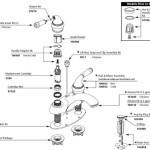How to Cover Tiles in a Bathroom
Transforming the look of a bathroom can be a daunting task, but covering existing tiles is a cost-effective and DIY-friendly way to achieve it. Whether you're looking to update outdated tiles, fix damaged ones, or simply change the aesthetics of your bathroom, this guide will provide you with step-by-step instructions on how to cover tiles professionally.
Materials and Tools You'll Need:
- New tile or tile-like material (e.g., vinyl, faux stone, wall panels)
- Thinset mortar or adhesive
- Notched trowel
- Measuring tape or ruler
- Level
- Spacers (optional)
- Grout (optional, if using tiles)
- Caulk gun and caulk
Step 1: Prepare the Surface
Thoroughly clean the existing tiles to remove any dirt, grime, or debris. If there are any loose or damaged tiles, remove them carefully using a chisel and hammer. Repair any cracks or holes in the underlying surface using a patching compound.
Step 2: Measure and Mark
Measure and mark the area where you want to apply the new tiles. Use a level to ensure that the tiles will be installed straight. If you're using spacers, lay them out to determine the spacing between the tiles.
Step 3: Apply Adhesive
Using a notched trowel, apply a thin layer of thinset mortar or adhesive to the back of the new tiles. Spread the mortar evenly, making sure to cover the entire surface of the tile.
Step 4: Install the Tiles
Press the tiles firmly into the adhesive, starting from the top corner and working your way down. Use spacers to ensure even spacing between the tiles. Tap the tiles gently with a rubber mallet to ensure they are secure.
Step 5: Grout the Joints (Optional)
If you're using tiles, you'll need to grout the joints between them. Mix the grout according to the manufacturer's instructions and apply it to the joints using a grout float or trowel. Use a damp sponge to remove any excess grout.
Step 6: Seal the Joints
Once the grout has dried completely, apply a sealant to the joints to protect them from moisture and staining. You can use a silicone or acrylic-based caulk for this purpose.
Step 7: Finishing Touches
Clean up any excess adhesive or grout, and remove the spacers if you used them. Allow the tiles to set for the recommended time according to the manufacturer's instructions. Once set, enjoy your newly transformed bathroom!
Tips:
- Consider using a backer board if the existing tiles are on a drywall surface.
- Use a tile saw to cut tiles to fit around obstacles such as pipes or corners.
- If you're covering a large area, work in sections to avoid overwhelming yourself.
- Allow ample time for the adhesive and grout to set before using the bathroom.
- Maintain the new tiles by cleaning them regularly and reapplying sealant as needed.

How To Cover Bathroom Wall Tiles 5 Easy Ways

What Is The Best Way To Cover Bathroom Wall Tile Hometalk

Covering Old Bathroom Tiles Shower Multipanel

Simple Ways To Cover Tiles Ly 8 Steps With S

How To Cover Up Old Tile A Bathroom

How To Diy Covering Ugly Tiles Mad About The House

How To Hide A Ed Tile With Diy Shelf Young House Love

How Can I Cover My Ugly Pink Bathroom Tile Hometalk

How To Cover Dated Bathroom Tile With Wainscoting

How To Cover Damaged Bathroom Walls On A Budget
See Also







